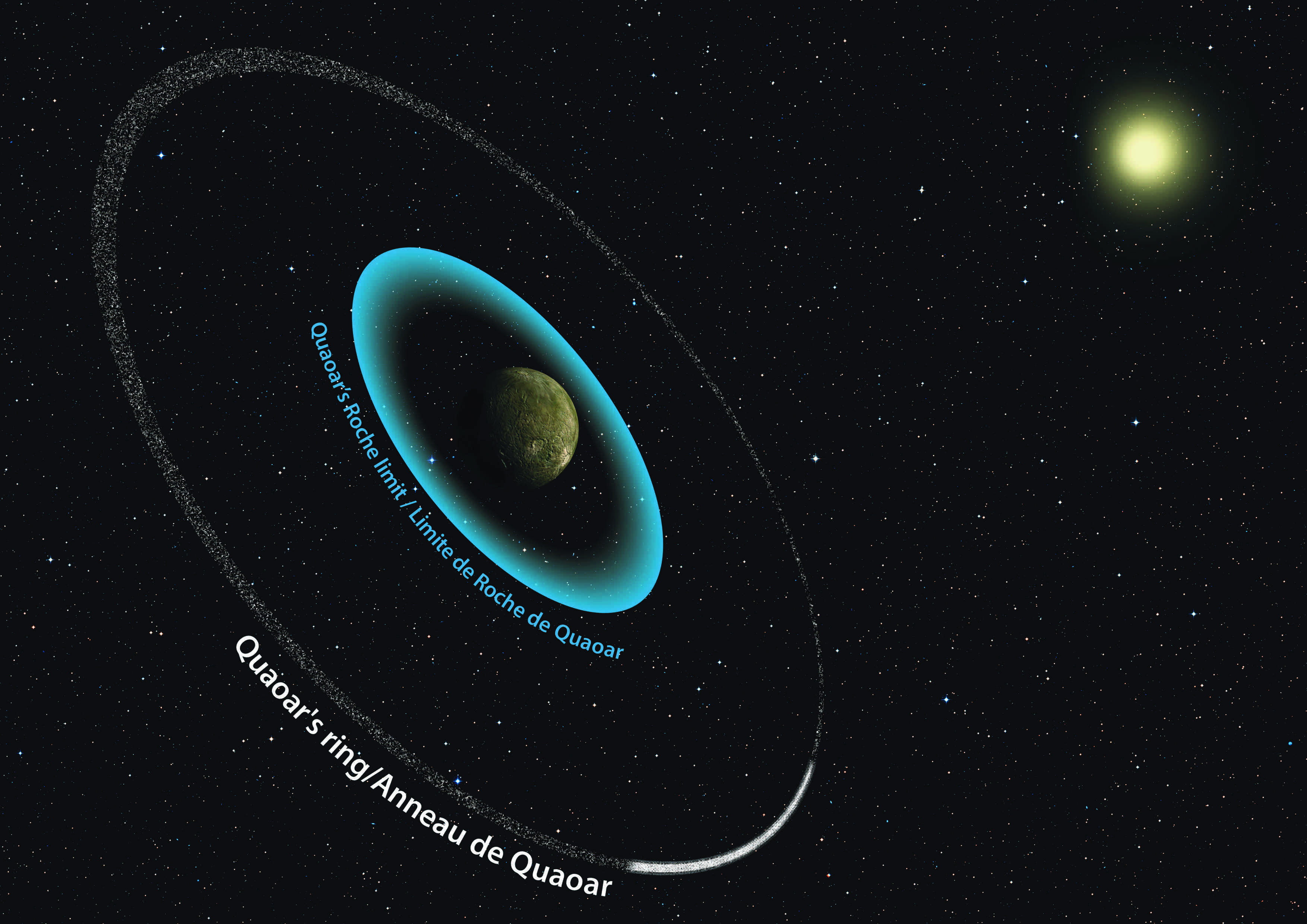The worlds at the edge of the Solar System, beyond the orbit of Neptune, continue to show just how peculiar things can get far from the Sun. For example, the heart of Pluto, the curious shape of Arrokoth, and the rings of Haumea. And now we can add the unusual rings of Quaoar to the list.
As dwarf planets go, Quaoar is in the middle range for size. It has a radius of 555 kilometers (345 miles) and it is orbited by a small moon, called Weywot, of about 160 kilometers (100 miles) in diameter. Weiwot orbits at about 14,500 kilometers (9,000 miles) or about 24 radii of Quaoar. This newly discovered ring is located at 7.5 radii. And that is extremely unexpected.
Every other body in the Solar System with a dense ring, from the majesty of Saturn to the double rings of the asteroid Chariklo, has these structures within a specific distance, which is known as the Roche limit. But the rings of Quaoar are much further out than the Roche limit for the dwarf planet.
“As a result of our observations, the classical notion that dense rings survive only inside the Roche limit of a planetary body must be thoroughly revised,” co-author Giovanni Bruno, INAF’s Astrophysical Observatory of Catania, Italy, said in a statement.
Outside the Roche limit, rings are supposed to coalesce into moons, something that would take just decades. So it is not clear how these have survived, and it is certain that planetary scientists will pore over it to understand them.
Quaoar’s rings’ location compared to where they’d be expected to be. Image credit: Paris Observatory
The discovery was possible thanks to the exoplanet-hunting telescope CHEOPS (CHaracterising ExOPlanet Satellite) a mission from the European Space Agency (ESA). CHEOPS observed a stellar occultation: Quaoar passed in front of the star, blocking its light. This approach is very useful for studying distant faint objects.
“When we put everything together, we saw drops in brightness that were not caused by Quaoar, but that pointed to the presence of material in a circular orbit around it. The moment we saw that we said, ‘Okay, we are seeing a ring around Quaoar,’” lead author Bruno Morgado, of the Universidade Federal do Rio de Janeiro, explained.
Occultations are not always successful. The location of stars needs to be known pretty well, and the motion of the observing telescope too. The first part was taken care of by Gaia, another ESA mission, which has mapped the position of billions of stars in the Milky Way.
The second part was not so easy. CHEOPS orbits about 713 kilometers (443 miles) in altitude. The density of the atmosphere there is pretty low, but still significant enough to affect it. And due to solar activity, the density increases and decreases in unexpected ways. A previous attempt at observing an occultation by Pluto was not successful.
“I was a little skeptical about the possibility to do this with CHEOPS,” admitted Isabella Pagano of the INAF’s Astrophysical Observatory of Catania and a member of the CHEOPS board. “But we investigated the feasibility.”
And it was indeed successful. These observations were the first ever detection of a stellar occultation by a trans-Neptunian object from space.
The discovery is reported in the journal Nature.
Source Link: Unexpected Rings Discovered Around Dwarf Planet In Our Solar System
